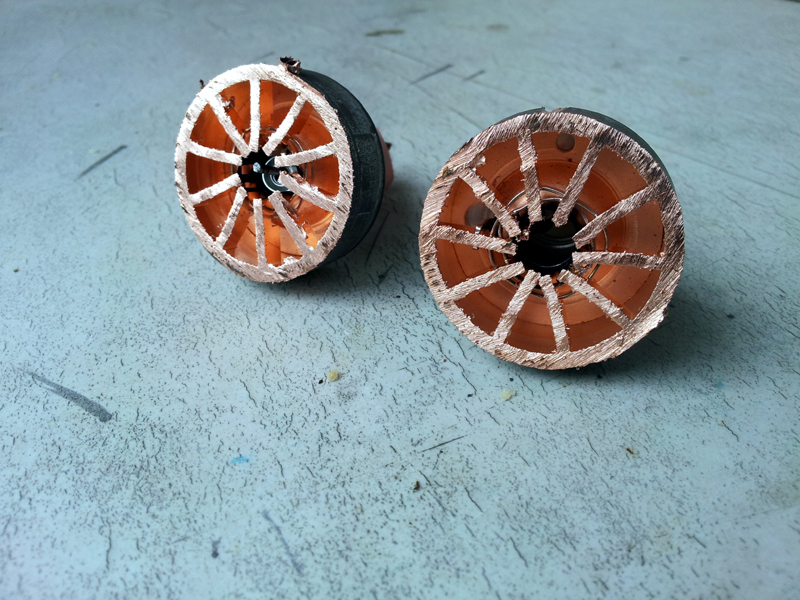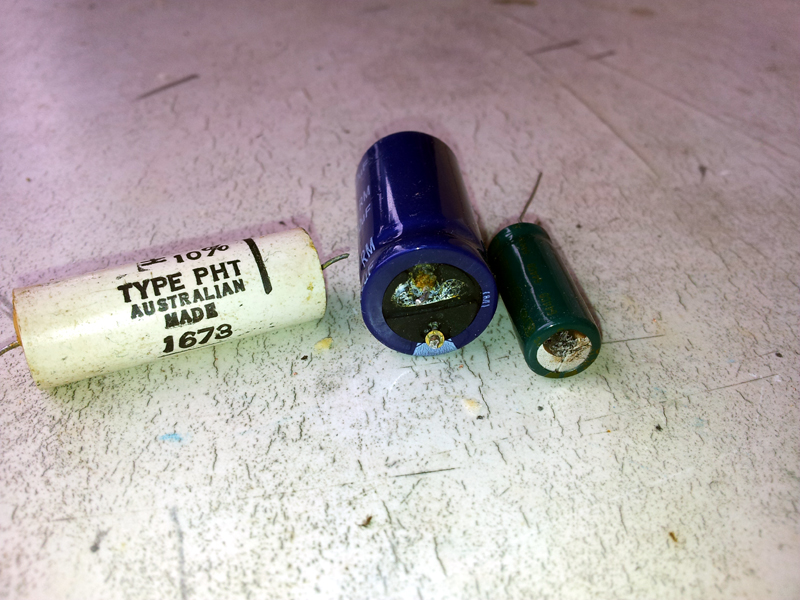General Discussion
Forum home - Go back to General discussion
|
Interesting Pictures.
|
|
|
« Back ·
1 ·
Next »
|
|
|
Return to top of page · Post #: 1 · Written at 4:04:45 PM on 21 June 2015.
|
|
|
|
Location: Penrith, NSW
Member since 7 April 2012 Member #: 1128 Postcount: 399 |
|
Greetings.   |
|
|
Return to top of page · Post #: 2 · Written at 9:48:54 PM on 21 June 2015.
|
|
|
|
Location: Wangaratta, VIC
Member since 21 February 2009 Member #: 438 Postcount: 5590 |
|
The plasma in that sort of magnetron, I believe rotates like a motor. The PHT is not exactly a modern cap. Its 70's & I am not sure if it is Polyester? The only one I have handy here in that style is marked MHT & is a UCC. It may have been a wrong fitment, as it is not leaking |
|
|
Return to top of page · Post #: 3 · Written at 9:41:40 PM on 22 June 2015.
|
|
|
|
Location: Ballarat, VIC
Member since 4 January 2011 Member #: 803 Postcount: 456 |
|
Those white UCC ones are a common sight in old B&W TV's especially in applications requiring a working voltage in excess of 630v DC. I view these with much suspicion as they can be as leaky as old waxed paper capacitors. I have also had some that test fine and still work. I suspect they have either part polyester / part paper or all paper insulation. |
|
|
Return to top of page · Post #: 4 · Written at 11:36:24 AM on 23 June 2015.
|
|
|
|
Location: Wangaratta, VIC
Member since 21 February 2009 Member #: 438 Postcount: 5590 |
|
One could speculate that the better jacket & sealing would have a direct bearing on the longevity of the cap. Do not however be complacent, I have seen several of the caramel coated polyesters of that era, crack like mud's especially if the fitter failed to put a kink in a wire as a strain reliever where the cap was likely to have very short wires. |
|
|
« Back ·
1 ·
Next »
|
|
|
You need to be a member to post comments on this forum.
|
|

Sign In

Vintage Radio and Television is proudly brought to you by an era where things were built with pride and made to last.
DISCLAIMER: Valve radios and televisions contain voltages that can deliver lethal shocks. You should not attempt to work on a valve radio or other electrical appliances unless you know exactly what you are doing and have gained some experience with electronics and working around high voltages. The owner, administrators and staff of Vintage Radio & Television will accept no liability for any damage, injury or loss of life that comes as a result of your use or mis-use of information on this website. Please read our Safety Warning before using this website.
WARNING: Under no circumstances should you ever apply power to a vintage radio, television or other electrical appliance you have acquired without first having it checked and serviced by an experienced person. Also, at no time should any appliance be connected to an electricity supply if the power cord is damaged. If in doubt, do not apply power.
Shintara - Keepin' It Real · VileSilencer - Maintain The Rage

 500VDC.
500VDC.